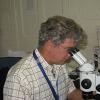-
Posts
94 -
Joined
-
Last visited
-
Days Won
1
Tony Gill's Achievements
Newbie (1/14)
5
Tony Gill last won the day on December 9 2014
Tony Gill had the most liked content!
5

Tony Gill replied to Digiman's topic in FOWLR (Fish-only with Live-rock)

Tony Gill replied to nightsimba's topic in New to the Marine Aquaria Hobby

Tony Gill replied to Digiman's topic in FOWLR (Fish-only with Live-rock)

Tony Gill replied to Digiman's topic in FOWLR (Fish-only with Live-rock)

Tony Gill replied to Digiman's topic in FOWLR (Fish-only with Live-rock)

Tony Gill replied to Digiman's topic in FOWLR (Fish-only with Live-rock)

Tony Gill replied to Digiman's topic in FOWLR (Fish-only with Live-rock)

Tony Gill replied to Digiman's topic in FOWLR (Fish-only with Live-rock)

Tony Gill replied to Digiman's topic in FOWLR (Fish-only with Live-rock)

Tony Gill replied to Digiman's topic in FOWLR (Fish-only with Live-rock)

Tony Gill replied to Bevan Beh's topic in New to the Marine Aquaria Hobby

